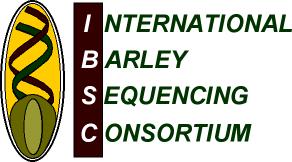
Barley Sequencing
Introduction
Barley (Hordeum vulgare L.) was one of the first domesticated cereal crops, originating in the Fertile Crescent over 10,000 years ago. It ranks fourth among the cereals in worldwide production and is widely cultivated in all temperate regions from the Arctic Circle to the tropics. In addition to its geographic adaptability, barley is particularly noted for its tolerance to cold, drought, alkali, and salinity.The barley genome - with 5.1 billion letters of genetic code - is one of the largest in cereal crops and twice the size of the human genome. Barley is a true diploid, thus, it is a natural archetype for genetics and genomics for the Triticeae tribe, including polyploid wheat, and rye. Highly collaborative international efforts have produced a substantial body of genetic and genomic resources in the past several years. In 2017 members of IBSC and colleagues have delivered an annotated map-based reference sequence ( http://dx.doi.org/10.1038/nature22043 ) of the barley genome.


